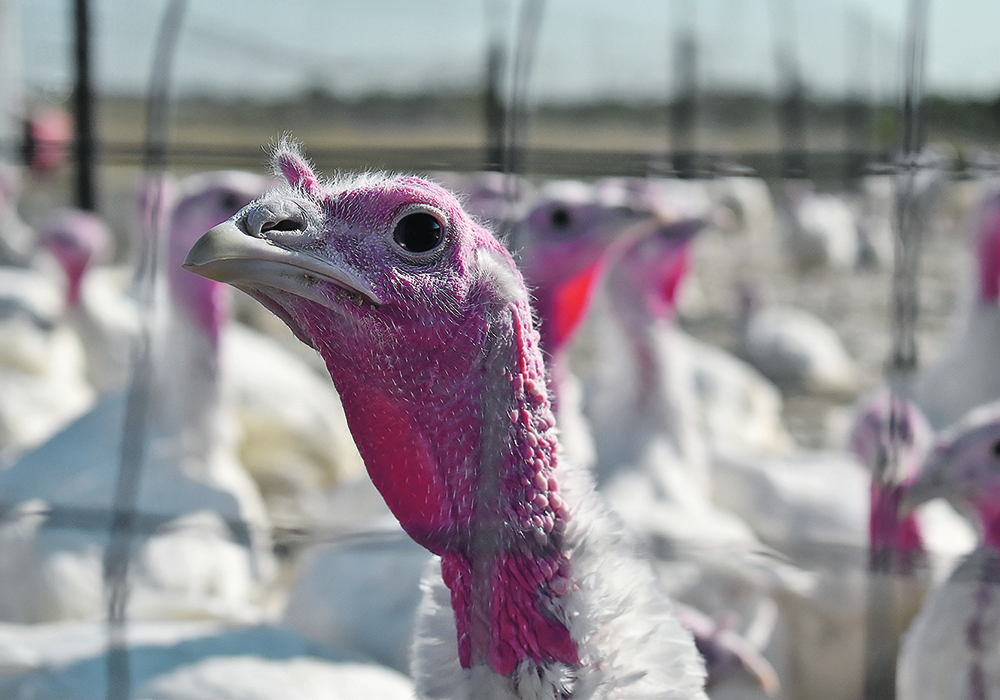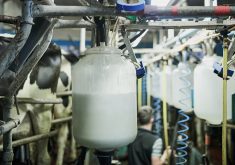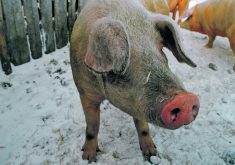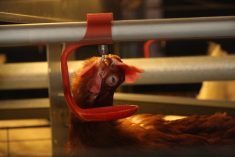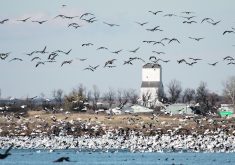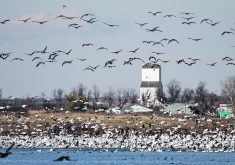Fraser Valley outbreak comes at a particularly bad time for producers because of Christmas season right around the corner
The number of commercial operations affected by avian influenza in British Columbia continues to grow with the eggs, hatchers, chicken, turkey and duck sectors all feeling the effects of a devastating outbreak in the Fraser Valley.
The Canadian Food Inspection Agency is reporting 63 poultry farms are designated as infected premises with more than 55 being commercial operations located in the Abbotsford, Chilliwack area hit with the bird flu since mid-November.
The impact is being especially felt by the turkey sector as the outbreak occurred just before Christmas season, a peak consumer period for turkey producers on par with Thanksgiving.
Read Also

VIDEO: Agritechnica Day 4: Robots and more robots, Nexat loves Canada and the trouble with tariffs
Agritechnica Day 4: Robots and more robots, Nexat loves Canada and the trouble with tariffs.
Natalie Veles, B.C .Turkey executive director, said 14 commercial producers have been quarantined with suspected cases in the latest outbreak, which will impact the industry on a couple of fronts.
“One being food supply as we’re heading into a very busy season for turkey with Christmas a couple of weeks away and a lot of our birds are grown specifically for this time of year and they are processed a couple of weeks before they go to market,” she said. “The loss in production is significant for our farmers but also processors, retailers and food service industry that rely on those birds for Christmas meals.”
It’s not just infected farms dealing with having to destroy their flocks and disinfect their operations feeling the pinch.
“Around those infected farms, all the other farms require permits to move birds on or off the farm, to have manure moved off the farm and then there are additional restrictions for not being able to place either poults or pullets within one kilometre of an infected premise,” said Veles. “Right now, with the 56 or so infected premises, we have almost 150 farms within a kilometre.”
Veles said 340 CFIA officials are working on the Fraser Valley issue.
“It’s taking a lot of their resources and the part which we’re being stretched on the most is handling the infected premises because we are getting two or three, sometimes four infected premises per day,” she said.
Compensation for poultry producers is available based on the age of the birds when they are culled.
“But the producers are incurring significant costs beyond that which are not recoverable through any current programs,” said Veles.
Not only does the Fraser Valley contain a significant number of chicken and turkey farms, there are eight processors in the region, which are also being hit hard by avian influenza.
“They are not covered by programs and just have that loss of bird that was going to go into the market,” said Veles. “Some of them are very large processors with operations in other provinces and overseas. Others are more local, independent processors and the impacts on them obviously vary depending on how much of their business relies on poultry at this time of the year.”
Veles said the situation is taking a mental health toll on producers, both those whose farms have been infected as well as those anxious theirs might be next.
“If a producer hasn’t had (avian influenza), every morning when they get up to check the birds in the barn they are concerned and they are worried,” said Veles. “Our producers who have been impacted by (avian influenza) and have an infected premise are having to deal with a barrage of questions and they need to work with CFIA closely. A lot of things aren’t within their control and have to follow extremely rigorous cleaning and disinfection processes and it’s a lot.”
Veles said the industry is trying to create support systems within the industry and in the broader community to help producers through the situation.
“But it’s pretty undeniable that it is difficult,” she said.
With the Fraser Valley industry facing this latest hit on top of flooding and heat domes in recent years combined with the threat of a return of the bird flu, Veles said there are fears for the long-term state of poultry production in the region.
“It’s in everyone’s minds that people are going to leave the industry,” she said.
The latest CFIA provincial statistics on the number of flocks culled due to the bird flu this year still reflect Alberta as having the most birds impacted with more than 1.4 million.
B.C. is anticipated to surpass that and significantly raise the national total of 4.6 million birds culled this year.


